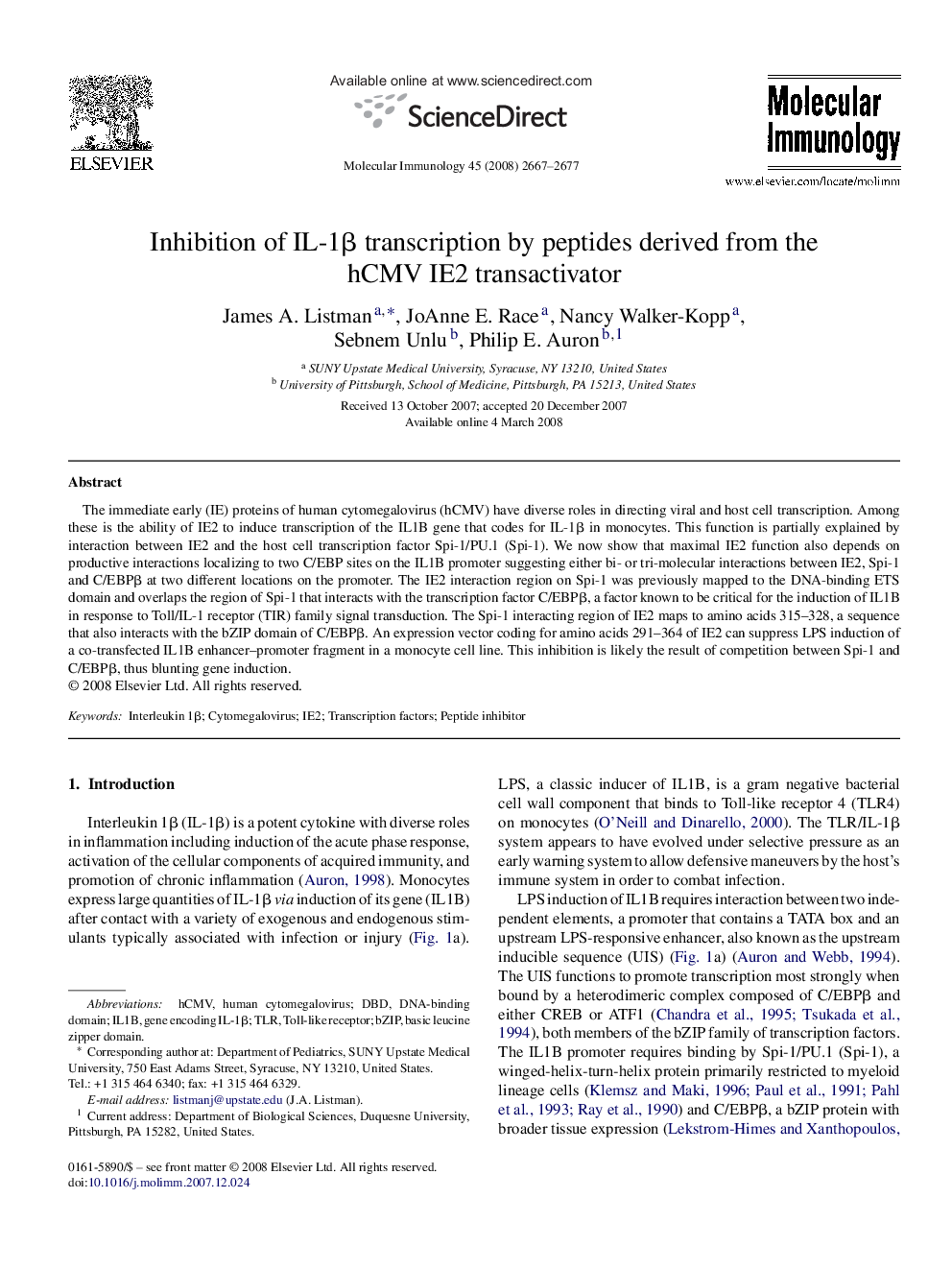| Article ID | Journal | Published Year | Pages | File Type |
|---|---|---|---|---|
| 2832764 | Molecular Immunology | 2008 | 11 Pages |
Abstract
The immediate early (IE) proteins of human cytomegalovirus (hCMV) have diverse roles in directing viral and host cell transcription. Among these is the ability of IE2 to induce transcription of the IL1B gene that codes for IL-1β in monocytes. This function is partially explained by interaction between IE2 and the host cell transcription factor Spi-1/PU.1 (Spi-1). We now show that maximal IE2 function also depends on productive interactions localizing to two C/EBP sites on the IL1B promoter suggesting either bi- or tri-molecular interactions between IE2, Spi-1 and C/EBPβ at two different locations on the promoter. The IE2 interaction region on Spi-1 was previously mapped to the DNA-binding ETS domain and overlaps the region of Spi-1 that interacts with the transcription factor C/EBPβ, a factor known to be critical for the induction of IL1B in response to Toll/IL-1 receptor (TIR) family signal transduction. The Spi-1 interacting region of IE2 maps to amino acids 315-328, a sequence that also interacts with the bZIP domain of C/EBPβ. An expression vector coding for amino acids 291-364 of IE2 can suppress LPS induction of a co-transfected IL1B enhancer-promoter fragment in a monocyte cell line. This inhibition is likely the result of competition between Spi-1 and C/EBPβ, thus blunting gene induction.
Keywords
Related Topics
Life Sciences
Biochemistry, Genetics and Molecular Biology
Molecular Biology
Authors
James A. Listman, JoAnne E. Race, Nancy Walker-Kopp, Sebnem Unlu, Philip E. Auron,
